Moisture Meters
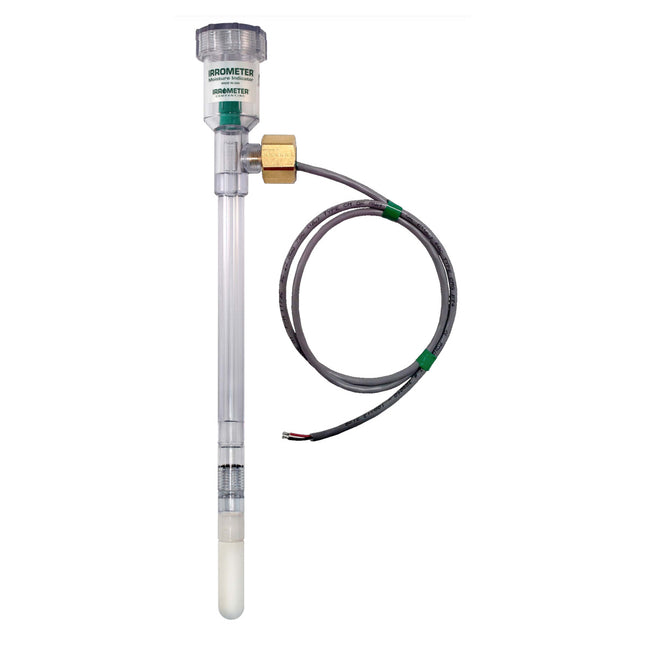
Voltage Irrometer 12"
Information you can use, when you need itMeasure the soil moisture available for your plants and automatically transmit to an IrroCloud Monitor. This tensiometer measures moisture levels in centibars and gives you the same information as typical analog versions you have to see in person. You can hook up to 6 of these to every IrroCloud Monitor and see the data on your smart phone, desk computer, or laptop anywhere in the world. The user-friendly IrroCloud software lets you see the data in many ways—graphs, averages, individual sites, rain events, and several other useful configurations, turning the data into actionable information.
$170.10
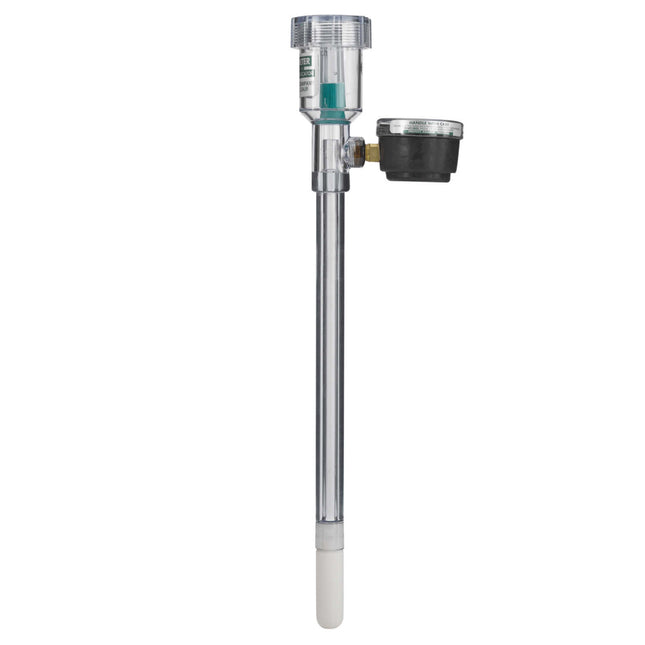
Irrometer Standard (SR) Model, 18"
OPERATING PRINCIPLE: The IRROMETER operates on the tensiometer principle, which measures soil water tension. Soil water tension is the energy (vacuum) applied to soil by the plant as it draws in water for nutrition. This force is measured in centibars (cb) or kilopascals (kPa) of tension with a high reading indicating the dry end of the scale and a low reading indicating the wet end of the scale. The IRROMETER instrument consists of a sealed, fluid filled tube that is equipped with a porous ceramic tip and a special vacuum gauge. They are installed in the ground with the tips placed at desired root zone depths. As the soil dries (increasing tension), fluid is drawn out of the instrument. This reduces the fluid volume in the IRROMETER, thus creating a partial vacuum which is registered on the gauge. The drier the soil, the higher the gauge reading. An irrigation application or rainfall event reverses this action. As water flows back into the soil (and the IRROMETER), tension is relieved in the soil and the instrument, resulting in a lower gauge reading (lower tension). In effect, the instrument is indicating how hard the roots are working. Due to the IRROMETER’s unique principle of operation, no calibrations are necessary under normal operating conditions for different soil types. A gauge reading of 50 cb (kPa) indicates that the roots are extracting the same amount of moisture whether the crop is planted in sandy soil or clay soil. Click here for Irrometer's instruction manual.
$124.50
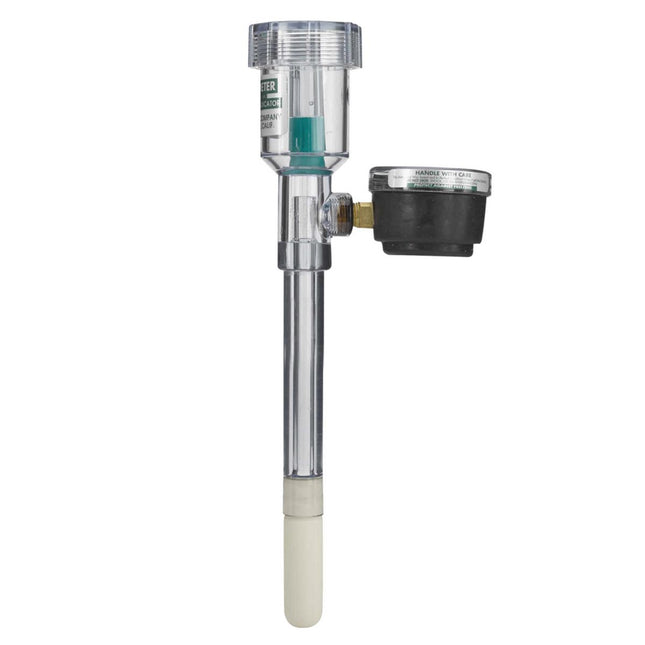
Irrometer Standard (SR) Model, 6"
OPERATING PRINCIPLE: The IRROMETER operates on the tensiometer principle, which measures soil water tension. Soil water tension is the energy (vacuum) applied to soil by the plant as it draws in water for nutrition. This force is measured in centibars (cb) or kilopascals (kPa) of tension with a high reading indicating the dry end of the scale and a low reading indicating the wet end of the scale. The IRROMETER instrument consists of a sealed, fluid filled tube that is equipped with a porous ceramic tip and a special vacuum gauge. They are installed in the ground with the tips placed at desired root zone depths. As the soil dries (increasing tension), fluid is drawn out of the instrument. This reduces the fluid volume in the IRROMETER, thus creating a partial vacuum which is registered on the gauge. The drier the soil, the higher the gauge reading. An irrigation application or rainfall event reverses this action. As water flows back into the soil (and the IRROMETER), tension is relieved in the soil and the instrument, resulting in a lower gauge reading (lower tension). In effect, the instrument is indicating how hard the roots are working. Due to the IRROMETER’s unique principle of operation, no calibrations are necessary under normal operating conditions for different soil types. A gauge reading of 50 cb (kPa) indicates that the roots are extracting the same amount of moisture whether the crop is planted in sandy soil or clay soil. Click here for Irrometer's instruction manual.
$149.24
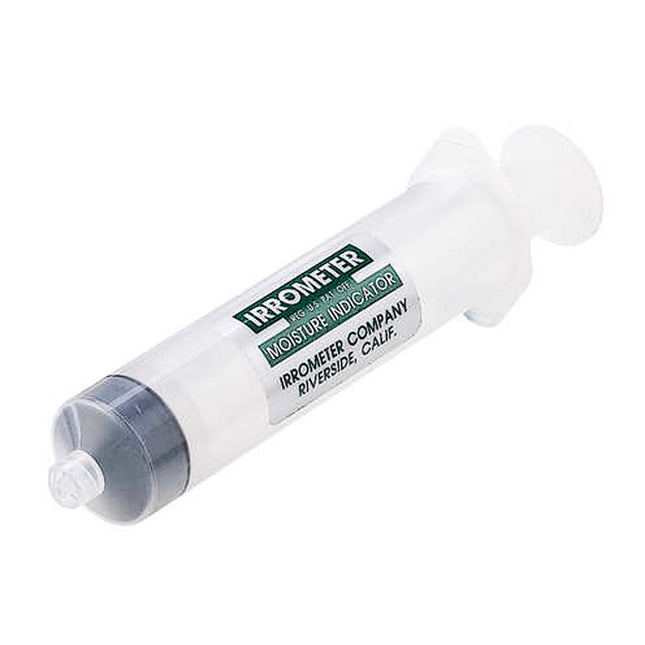
Irrometer Disposable Soil Sampling Syringe
The syringe is used for extraction of the collected sample. Connect the plastic extraction syringe to the tubing by twisting it onto the end fitting and draw up on the syringe plunger to extract the soil solution for analysis. *Between samples, it is important to rinse the syringe with distilled water to prevent carry-over contamination from sample to sample. For Installation and Operation Instructions click here.
$7.94
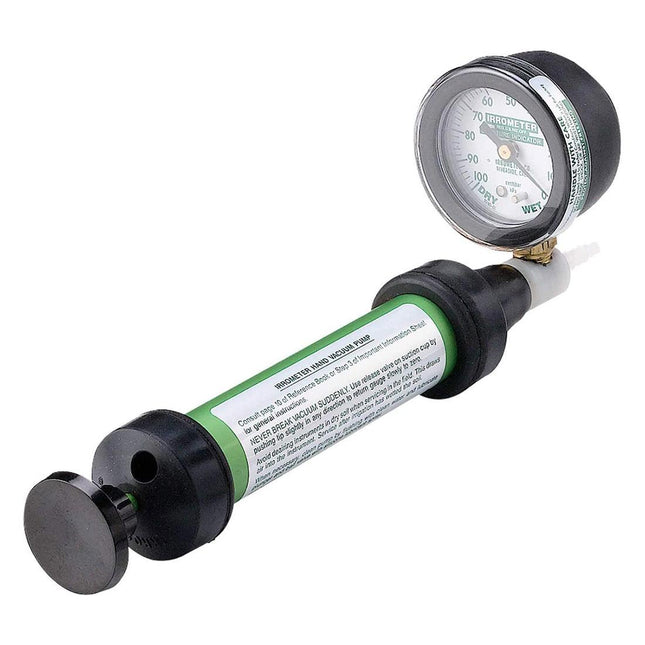
Irrometer Soil Solution Access Tube (SSAT) Vacuum Pump
A hand vacuum pump with gauge and tubing adapter is used for applying vacuum to the tube for sample collection. We recommend using the Vacuum Pump on tubes longer than 12 in. (30 cm) to apply proper vacuum. The extracted soil water samples are commonly tested with electronic meters or portable test kits. This useful in-field sampling technique is quick and easy to perform, which makes it well suited to the frequent fertigation schedules common with certain growing conditions.
$115.67
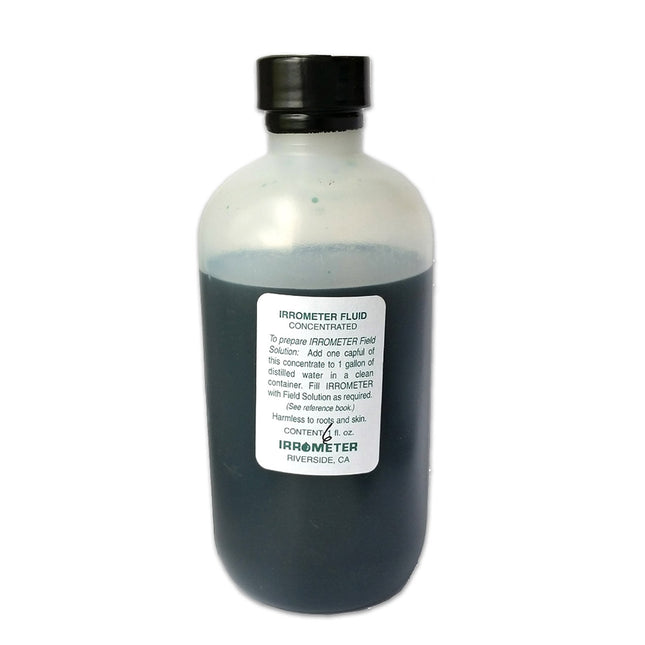
Irrometer Tensiometer Fluid (6 oz.)
1 oz. bottle of concentrated dye for coloring water. To prepare IRROMETER Field Solution: Add a capful of this concentrate to 1 gallon of distilled water in a clean container. Fill IRROMETER with Field Solution as recommended (See Reference Book) Harmless to roots and skin
$23.54
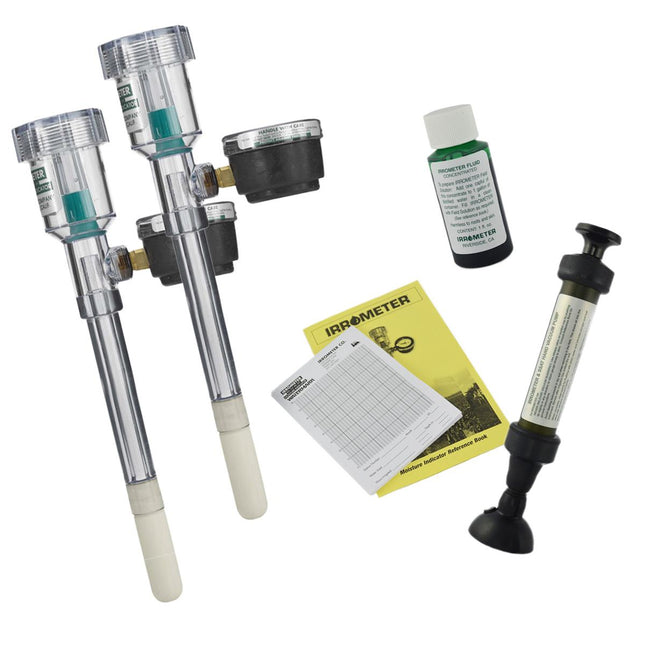
Two Irrometer Low Tension (LT) Models, 6" and Pump Kit
Irrometer sensors come made for soil (outside, gardens and farms) and for planting and potting mixes (indoor, greenhouses, and outside beds). This one - best for using with potting mixes - includes two sensors and the parts needed to set it up: a hand vacuum pump, a bottle of Irrometer fluid, 25 monthly chart forms, and a reference book. After setting up the sensors, you can use the pump to remove air from them to ensure maximum sensitivity and accuracy.
$435.69
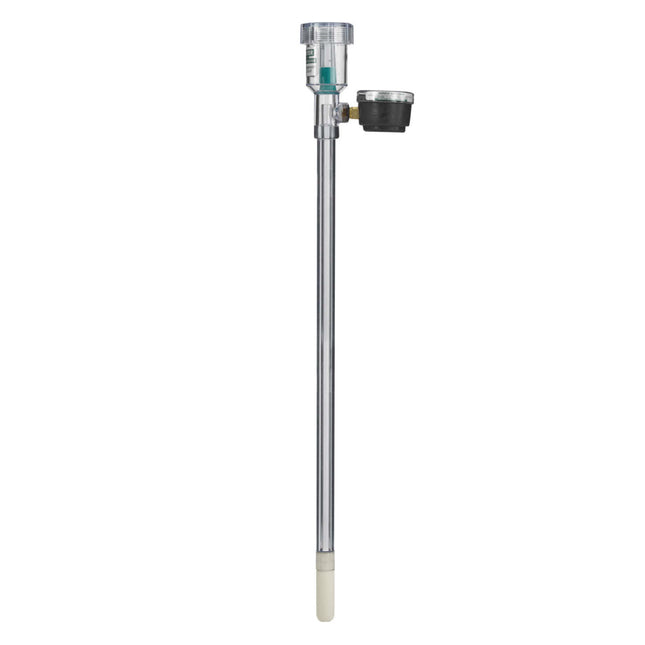
Irrometer Standard (SR) Model, 24"
OPERATING PRINCIPLE: The IRROMETER operates on the tensiometer principle, which measures soil water tension. Soil water tension is the energy (vacuum) applied to soil by the plant as it draws in water for nutrition. This force is measured in centibars (cb) or kilopascals (kPa) of tension with a high reading indicating the dry end of the scale and a low reading indicating the wet end of the scale. The IRROMETER instrument consists of a sealed, fluid filled tube that is equipped with a porous ceramic tip and a special vacuum gauge. They are installed in the ground with the tips placed at desired root zone depths. As the soil dries (increasing tension), fluid is drawn out of the instrument. This reduces the fluid volume in the IRROMETER, thus creating a partial vacuum which is registered on the gauge. The drier the soil, the higher the gauge reading. An irrigation application or rainfall event reverses this action. As water flows back into the soil (and the IRROMETER), tension is relieved in the soil and the instrument, resulting in a lower gauge reading (lower tension). In effect, the instrument is indicating how hard the roots are working. Due to the IRROMETER’s unique principle of operation, no calibrations are necessary under normal operating conditions for different soil types. A gauge reading of 50 cb (kPa) indicates that the roots are extracting the same amount of moisture whether the crop is planted in sandy soil or clay soil. Click here for Irrometer's instruction manual.
$126.93
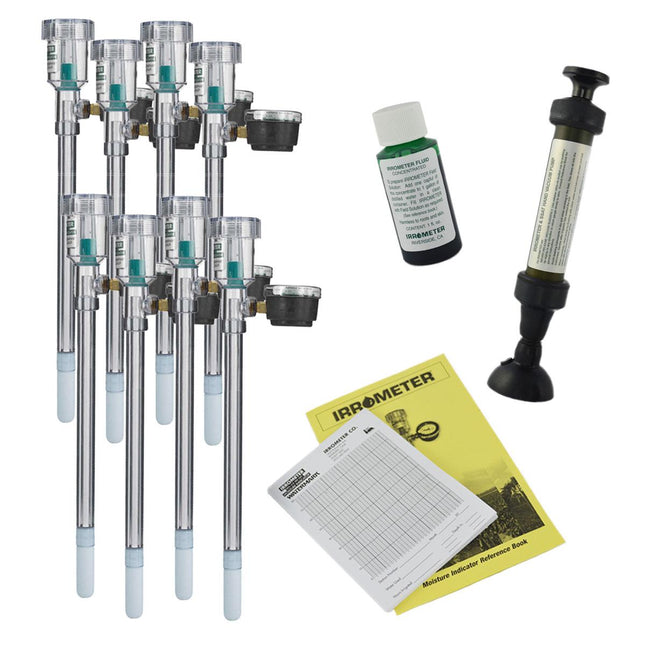
Eight Irrometer Low Tension (LT) Models, 12" and Pump Kit
Irrometer sensors come made for soil (outside, gardens and farms) and for planting and potting mixes (indoor, greenhouses, and outside beds). This one - best for using with potting mixes - includes eight sensors and the parts needed to set it up: a hand vacuum pump, a bottle of Irrometer fluid, 25 monthly chart forms, and a reference book. After setting up the sensors, you can use the pump to remove air from them to ensure maximum sensitivity and accuracy.
$1,007.00

Voltage Irrometer 6"
Description Fast shallow-soil information when you need itLike the 12" version, this 6" sensor measures soil moisture and transmits it to an IrroCloud Monitor. Because this one is closer to the soil surface, it works best for plants with shallow roots and for large plants when they're still small. Hook up 1-6 of these for every IrroCloud Monitor you have or plan to get and automatically have all this critical information on your phone or computer. You can also install a combination of 6" and 12" sensors on the same system with the same simple software, accuracy, graphs, averages, and configurations.
$166.14
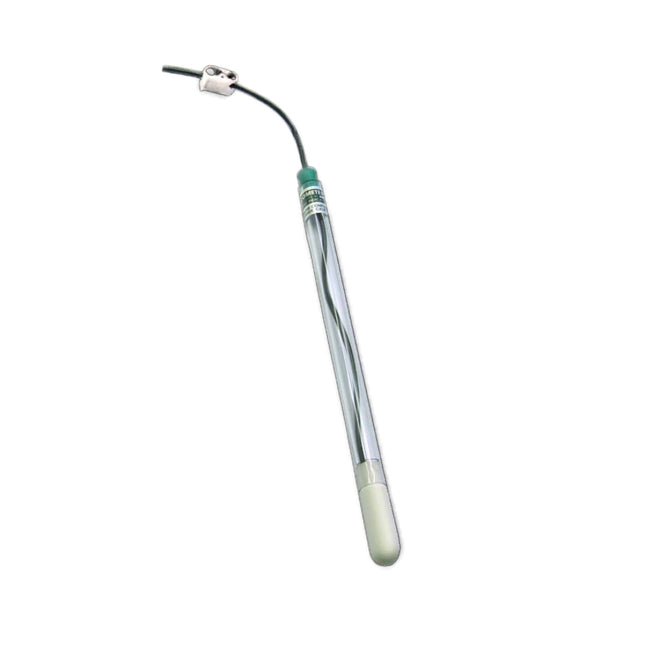
Irrometer 12" Soil Solution Access Tube (SSAT) SR
SSAT (Soil Solution Access Tubes), or Suction Lysimeters, were developed to easily extract soil water samples for testing. They provide the user with an accurate method of determining salinity or plant nutrient levels. Because the sample is collected at root zone depth, it reflects the true impact fertilization has on the plant material. Understanding soil water conditions helps the user make informed fertigation scheduling decisions resulting in improved yield and reduced fertilizer, water, labor and energy costs. Features: Easy to install and use Standard ceramic tip (white) for most soil types Optional Double Suction line for longer tubes Collects soil water sample at the root zone Crop consultants, irrigation professionals and researchers find the SSAT particularly useful because of its ability to easily gather soil water samples for testing. Commercial growers see the value of soil water sampling at the root zone because it reflects the net "effect" that fertilization has as it interacts with previously applied nutrients in the soil. Scientists also use this equipment when identifying and researching environmental contaminants and their movement in soil. Click here for Irrometer's instruction manual.
$45.36
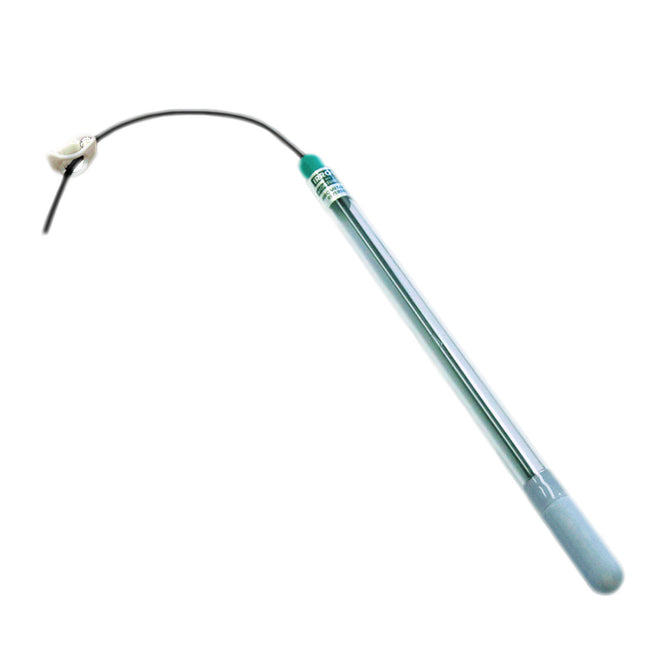
Irrometer 12" Low Tension (LT) Soil Solution Access Tube (SSAT)
SSAT (Soil Solution Access Tubes), or Suction Lysimeters, were developed to easily extract soil water samples for testing. They provide the user with an accurate method of determining salinity or plant nutrient levels. Because the sample is collected at root zone depth, it reflects the true impact fertilization has on the plant material. Understanding soil water conditions helps the user make informed fertigation scheduling decisions resulting in improved yield and reduced fertilizer, water, labor and energy costs. Features: Easy to install and use Low Tension tip (blue) for sandy soils and growing media Optional Double Suction line for longer tubes Collects soil water sample at the root zone Crop consultants, irrigation professionals and researchers find the SSAT particularly useful because of its ability to easily gather soil water samples for testing. Commercial growers see the value of soil water sampling at the root zone because it reflects the net "effect" that fertilization has as it interacts with previously applied nutrients in the soil. Scientists also use this equipment when identifying and researching environmental contaminants and their movement in soil. For more information see Irrometer's spec sheet and instructions.
$48.77














